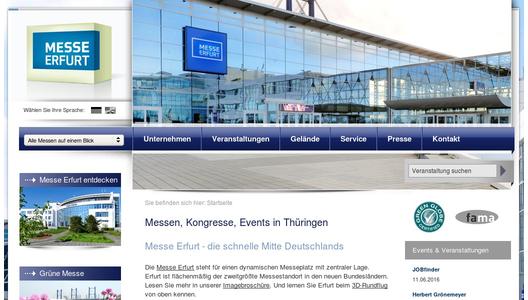The use of several laser sources, higher laser outputs, faster build-up rates and larger build volumes combined with increasing material diversity all add up to one thing: the constantly expanding use of Additive Manufacturing (AM) in the manufacture of series production components. “Even if the technologies and the AM market are developing at light speed and last year’s experiences are already obsolete, it is an illusion to believe that everything is 3D-printable. In some areas we are still a long way off from what has been publicised, while in others we are already much further along. Access to the latest information and an intensive exchange of experiences are essential in order to gain an overview not only of new technologies, software and materials, but also of the challenges inherent in the industrialisation of Additive Manufacturing processes,” explained Antonius Köster, Managing Director of Antonius Köster GmbH & Co. KG. The AM expert of many years’ standing is responsible for the programme of the User’s Conference at the 13th Rapid.Tech. The two-day event (14–15 June) is divided into four sections.
Industrial 3D Printing and business models
Individualisation, needs-based production and mass customisation are buzzwords that are often mentioned in connection with AM. But regardless of the variety of processes and materials that are now available, implementing these in the field requires properly prepared data. 3D CAD plays an essential part in this. However, not every user has access to these systems and the necessary specialist knowledge, or is able to map a complete design process for each application. The first session will therefore look at software innovations, such as an interactive 3D configurator and an innovative development platform, that help simplify and speed up design processes. Participants will also learn about a solution for creating a design analysis based on a 3D CAD model. The feasibility analysis helps prevent problems during prototype production as it enables as many changes as are needed to be made. Additive Manufacturing can also be combined with conventional manufacturing processes in order to optimise the production of components.
How can new component characteristics be designed with added value?
The second session of the User’s Conference provides answers to this question. Case studies will be referenced to demonstrate the aspects of bionic design with topology optimization as well as the realisation of complex, organic shapes with new design possibilities that go beyond the scope of conventional CAD systems. The session will also examine the integration of new design guidelines and manufacturing boundary conditions. Another item on the programme is the results of an investigation of functionally integrated, additively manufactured metal damping structures and their adaptation to influencing vibrations. This session also includes the presentation of a study on the mechanical material characterisation of structures that have been produced using fused-filament fabrication technology employing a combination of X-ray computed tomography, image correlation and in-situ pressure testing. The use of laserbased Additive Manufacturing to generate graded material transitions is another issue covered in this block.
Learning from the best
In the third session, three seasoned practitioners and established service providers in the field of Additive Manufacturing talk about their experiences and provide insights into their daily work. Topics of discussion include new system concepts that enable automated processes and promise to transform the marketplace radically, as well as the question of where additive contract manufacturers will fit into this. 3D parts are typically built up layer by layer, with the layers in parallel to the processing line. When using plastic, this results in anisotropic parts that exhibit characteristics in the direction of build-up which differ from those parallel to the processing line. A solution will be presented for the 5-axis-based production of FDM parts in order to enable loadoptimised manufacture of parts. It’s not quite as easy as “Buy machine and start printing”. A presentation on the series production of laser-sintered plastic parts drives this message home, detailing the requirements that still have to be met before industrial-scale production is possible.
Reproducibility and quality assurance
Even though Additive Manufacturing is constantly establishing itself in new fields of application in a variety of sectors, there are still some obstacles to broad industrial deployment. These include measures to ensure the stability, reproducibility and consistency of the processes and hence the consistent quality of the components and their characteristics. The fourth session addresses these issues and includes a contribution outlining the work of the Association of German Engineers (VDI) Expert Committee 105 – Additive Manufacturing. Also discussed will be the qualification of manufacturing systems and process validation in the regulated environment of medical technology and the aerospace industry.
“To better reflect the advances in AM, we have added the ‘3D Metal Printing’, ‘Additive Contract Manufacturing’, ‘Electronic Engineering’ and ‘Automotive Industry’ trade forums to the established seven sections of the Rapid.Tech conference programme. This will give participants the opportunity to go back and forth between the presentations at the individual events and thereby gain a perspective on subjects normally outside of their field of view. We have also responded to the greatly increased need for information by adding a third day to the Rapid.Tech programme,” explained Wieland Kniffka, CEO of Messe Erfurt GmbH. The complete conference programme is available at www.rapidtech.de. All presentations will be simultaneously translated (German<>English).
Thanks to its unique combination of trade show and conference, Rapid.Tech in Erfurt is amongst the world’s foremost events in the field of Additive Manufacturing. For the fourth time FabCon 3.D, Germany’s 3D Printing fair for semi-professional users and prosumers, will be held in parallel with the event.

